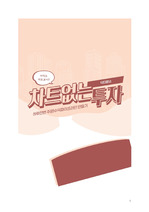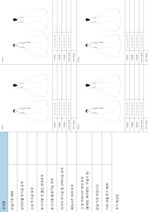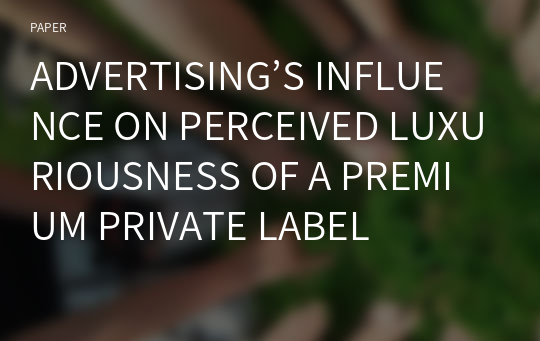ADVERTISING’S INFLUENCE ON PERCEIVED LUXURIOUSNESS OF A PREMIUM PRIVATE LABEL
* 본 문서는 배포용으로 복사 및 편집이 불가합니다.
서지정보
ㆍ발행기관 : 글로벌지식마케팅경영학회(GFMC)
ㆍ수록지정보 : GFMC Session1
ㆍ저자명 : Seoyoung Kim, Sungkyu Lee, Jong-Ho Lee, Charles R. Taylor
ㆍ저자명 : Seoyoung Kim, Sungkyu Lee, Jong-Ho Lee, Charles R. Taylor
영어 초록
This study examines how advertising can be used by premium private labels to develop perceived luxuriousness and, in turn, purchase intention. The findings suggest perceived image and quality relative to regular private labels and a leading national brand as well as store-brand image congruity as key factors and support the store-type effect.Introduction
Private labels (PLs) are receiving increased attention in line with their significant growth (Schnittka, 2015). Braak, Geyskens, and Dekimpe (2014) pointed out the evolving trend of more PLs offering high quality at a high price in comparison to their low-quality, low-price heritage. Among multiple tiers of PLs, PPLs exclusively aim at a premium tier of the market and try to offer the value comparable to that of top-tier NBs (Jost 2014). Acknowledging differentiated natures of PPLs, this paper analyzes what advertising strategies make consumers perceive a PPL to be luxurious and in turn, increase purchase intention. Cue utilization theory and categorization theory are used as a basis for hypotheses. Our research is an effort to shed light on adequate design of the advertising message for the successful introduction of a PPL.
Theoretical Background
Premium Private Label and Perceived Luxuriousness
For a PPL, being able to offer outstanding value as compared to top-tier NBs is a critical issue (Geyskens, Gielens & Gijsbrechts 2010). To investigate whether a PPL is successfully positioned, we suggest the construct of perceived luxuriousness as a key variable. We define a brand's luxuriousness as its ability to satisfy multifaceted needs of consumers with its products which is not limited to functional needs (Lee, Ko, Kee & Kim, 2015), through five value dimensions (Vigneron & Johnson, 2004). Consequently, we employ the brand luxury index (BLI) to measure perceived luxuriousness (Vigneron & Johnson, 2004).
Cue Utilization Theory
According to cue utilization theory, when making purchases, consumers use diverse extrinsic and intrinsic cues, and make the assumption that such cues will help them make the most reasonable purchase decision (Richardson, Dick & Jain, 1994). Referring to cues, consumers decide to buy the product only if it is perceived as a better choice than the alternatives in terms of overall value that it conveys. These cues are often displayed and reinforced via advertising (Yi, 1993).
Categorization Theory
According to categorization theory, when exposed to advertising messages for a new brand, consumers are expected to call up information available in memory that is classified into categories (Carrillat, Harris, & Lafferty, 2010). Punj & Moon (2002) demonstrated that a successful strategy for new brands is to associate itself with a successful existing brand to be included in the consideration set while differentiating itself from other brands.
Hypotheses Development
Image Similarity
Perceived similarity between brands and products has been discussed at various levels and scopes. It has been illustrated that shared physical attributes (Aaker & Keller, 1990) and shared abstract image (Park, Milberg & Lawson, 1991) between product lines moderate the probability of being perceived as similar by consumers. Considering the disparate positions between PPLs and RPLs, we suggested that RPLs are useful as a disparate option that may in turn emphasize the premium position of a PPL (Palmeira & Thomas, 2011).
H1a. Image similarity between a PPL and a RPL, as reinforced by advertising, will have a negative effect on the perceived luxuriousness of the PPL.
If a PPL can associate itself with the experiential value of a high-positioned NB, it is more likely that the PPL will be perceived as luxurious by signaling comparability (Sayman et al., 2002).
H1b. Image similarity between a PPL and a NB, as reinforced by advertising, will have a positive effect on the perceived luxuriousness of the PPL.
If the different positions of a RPL and a PPL are not perceived by consumers, consumers might judge the PPL as simply a similar but expensive option and would not be willing to purchase it (Huang & Huddleston, 2009).
H2a. Image similarity between a PPL and a RPL, as reinforced by advertising, will have a negative effect on the purchase intention for the PPL.
Closer associations between a PPL and a top-tier NB built through advertising lead to enhanced familiarity with the PPL and perceptions of reduced risks (Erdem, Zhao & Valenzuela, 2004).
H2b. Image similarity between a PPL and a NB, as reinforced by advertising, will have a positive effect on the purchase intention for the PPL.
Quality Superiority
Perceived quality is defined by Aaker (1991) as: “the customer’s perception of the overall quality or superiority of a product or service with respect to its intended purpose, relative to alternatives”. Consumers’ abstract beliefs regarding the product’s quality can be deduced from “credence quality attributes” (Ophuis & Trijp, 1995). The quality of products is evaluated relatively, compared with alternatives. Nueno and Quelch, (1998) pointed out that there are a few characteristics shared by premium brands, and excellent quality is one of them.
H3a. Quality superiority of a PPL compared to RPL, as reinforced by advertising, will have a positive effect on the perceived luxuriousness of PPL.
H3b. Quality superiority of a PPL compared to NB, as reinforced by advertising, will have a positive effect on the perceived luxuriousness of PPL.
According to Sethuraman, Tellis, and Briesch (2011), consumer perceptions of quality of a PL are evaluated based on quality differentials and play a dominant role when consumers make purchase decisions. Indeed, the perceived quality differential between a PL and a NB has been found to influence the share of the PL (Erdem et al., 2004).
H4a. Quality superiority of a PPL compared to a RPL, as reinforced by advertising, will have a positive effect on the purchase intention of the PPL.
H4b. Quality superiority of a PPL compared to a NB, as reinforced by advertising, will have a positive effect on the purchase intention of the PPL.
Image Congruity between a Store and a PPL
At the individual level, a generalized store image is determined by each consumer’s beliefs about retailer-specific attributes (Lee & Hyman, 2008). If the positive store image can be transferred through a number of positive associations between the store image and a PL, it will help consumers evaluate a newly encountered PL more favorably (Collins-Dodd & Lindley, 2003). As Dubois, Laurent, and Czellar (2001) demonstrated, consistent value shared between a parent brand and an extension will further strengthen the luxurious position.
H5a. Image congruity between a store and a PPL will have a positive effect on the perceived luxuriousness of the PPL.
Furthermore, with congruity consumers will see a brand which maintains the standards and preserve its essence as authentic and are likely to form positive responses toward a brand (Choi, Ko, Kim & Mattila, 2015). Lee and Hyman (2008) illustrated that the congruity between beliefs about a store and a PL would lead to a relatively favorable attitude toward a PL product.
H5b. Image congruity between a store and a PPL will have a positive effect on the purchase intention of the PPL.
Perceived Luxuriousness and Purchase Intention
Sethuraman et al. (2011) illustrated that both quality and non-quality values matter in purchase decisions of a PL. For a PPL aiming at signaling an outstanding position, representations of added value are critical to form purchase intentions (Fionda & Moore, 2008). Thus:
H6. Perceived luxuriousness of a PPL will have a positive effect on the purchase intention of the PPL.
Store type Effect
Consumers evaluate retailers differently and their subjective evaluation of the retailer is also expected to affect evaluations of products sold in the retailer (Grace and O’cass, 2005; Pappu and Quester 2008). The more upscale image and positioning of department stores are regarded to allow products they sell to be perceived as luxurious through more diverse appeals. In turn, purchase intentions are to be facilitated with ease, relatively.
Proposition 1: According to store type, relative perception of luxuriousness of a PPL will be different.
Proposition 2: According to store type, relative purchase intention of a PPL will be different.
Methods
Experiments were conducted among undergraduate-level students (aged 20-29) at a large Korean university, as they have relatively common traits and increasing experience with private labels (Trendmonitor, 2015). A total of 339 self-administered questionnaires were distributed, out of which 324 were used for analysis: 166 for department stores, 158 for hypermarkets. A purchase scenario of a cashmere sweater as well as an advertisement of the PPL sweater with information about each brand’s product (i.e. the material, the manufacturer, the distributor, and the advertisement) was given. For robust results, the experiment was conducted via two media types, online and paper.
Analysis and Results
Structural Model Testing
We used structural equation modeling (AMOS 21) to test the proposed theoretical framework and propositions (see Figure 1). All estimates indicate an acceptable fit.
Individual Hypothesis Testing
The results indicate that image similarity between a PPL and a RPL negatively influences the perceived luxuriousness of the PPL (supporting H1a), but image similarity between the PPL and a NB positively influences the perceived luxuriousness of the PPL (supporting H1b). Although image similarity between a PPL and a RPL has no direct influence on the purchase intention of the PPL (H2a is rejected), image similarity between the PPL and a NB positively influences the perceived luxuriousness of the PPL (supporting H2b).
Quality superiority of the PPL compared to the RPL positively influences both the perceived luxuriousness and purchase intention of the PPL (supporting both H3a and H4a), but quality superiority of the PPL compared to the NB does not have a significant effect (H3b and H4b are rejected).
Congruity between the PPL and store is found to influence the perceived luxuriousness of the PPL (supporting H5a) but has no direct influence on the purchase intention (H5b is rejected). Meanwhile, the hypothesized effect of the perceived luxuriousness of PPL on purchase intention is supported (H6).
Proposition Testing
The data for each store type, department store (n =166) and hypermarket (n=158), was analyzed separately via multi-group analysis to assess store type effects on the modeled relationships.
The findings for department stores indicate that the effects of image similarity between a PPL and a RPL on perceived luxuriousness, image similarity between the PPL and a NB on the purchase intention, quality superiority of the PPL compared to the RPL on the perceived luxuriousness as well as the purchase intention, and image congruity between the PPL and the store on the perceived luxuriousness are significant. Meanwhile, the findings for hypermarkets represent that the effects of image similarity between the PPL and NB on perceived luxuriousness and quality superiority of the PPL compared to the RPL on the perceived luxuriousness of the PPL are significant. For both store types, overall perceived luxuriousness turned out to be positively related to purchase intention.
Conclusion
The findings of this study have implications for a PPL aiming at positioning itself in consumers’ minds as luxurious, vis-à-vis a RPL and a NB. In regard to the perceived brand images, using advertising, efforts to differentiate a PPL from a RPL and to equate a PPL with the top-tier NB appears to be a reasonable strategy. Moreover, using advertising to emphasize superior quality compared to the RPL is likely to be effective whereas to compare it to a NB will not. Also, image congruity between a store and a PPL would allow the PPL to be perceived as luxurious as it aims to be. Furthermore, the results lead to a rationale for disparate strategies between two store types. As a follow-up study, we are planning to examine how direct manipulation of the comparative advertising messages influences consumers’ perceived luxuriousness and purchase intentions of a PPL.
참고 자료
없음"GFMC Session1"의 다른 논문
 FAST AND SLOW FASHION BRANDS IN DEVELOPING SUSTAINABLE ..6페이지
FAST AND SLOW FASHION BRANDS IN DEVELOPING SUSTAINABLE ..6페이지 “WHAT IF A CELEBRITY AND A BRAND CO-CREATE A NEW COLLEC..7페이지
“WHAT IF A CELEBRITY AND A BRAND CO-CREATE A NEW COLLEC..7페이지 THE INSTAGRAM’S STRATEGY IN ENGAGING THE CUSTOMER’S LOY..3페이지
THE INSTAGRAM’S STRATEGY IN ENGAGING THE CUSTOMER’S LOY..3페이지 THE PARTICULARITIES OF NEW PRODUCT DEVELOPMENT IN THE T..5페이지
THE PARTICULARITIES OF NEW PRODUCT DEVELOPMENT IN THE T..5페이지 THE LONE CHOCOLATE BAR: THE INFLUENCE OF PERCEIVED SCAR..6페이지
THE LONE CHOCOLATE BAR: THE INFLUENCE OF PERCEIVED SCAR..6페이지 ADS AS WORKS OF ART: MEASURING ADVERTISING IMMERSION3페이지
ADS AS WORKS OF ART: MEASURING ADVERTISING IMMERSION3페이지 ECONOMIES OF SMALL: NICHE STRATEGIES AND SUCCESS FACTOR..8페이지
ECONOMIES OF SMALL: NICHE STRATEGIES AND SUCCESS FACTOR..8페이지 THE INFLUENCE OF ONLINE CUSTOMER REVIEWS ON RETAILERS' ..6페이지
THE INFLUENCE OF ONLINE CUSTOMER REVIEWS ON RETAILERS' ..6페이지 IS THE ARTIFICATION PROCESS PERCEIVED BY FINAL CONSUMER..6페이지
IS THE ARTIFICATION PROCESS PERCEIVED BY FINAL CONSUMER..6페이지 THE ODD EVEN PRICE PARADOX IN THE FASHION LUXURY SECTOR6페이지
THE ODD EVEN PRICE PARADOX IN THE FASHION LUXURY SECTOR6페이지


























